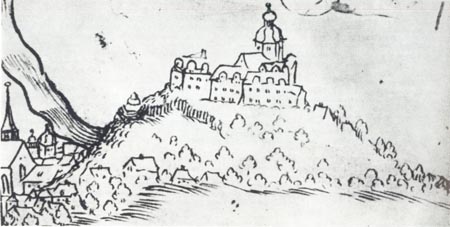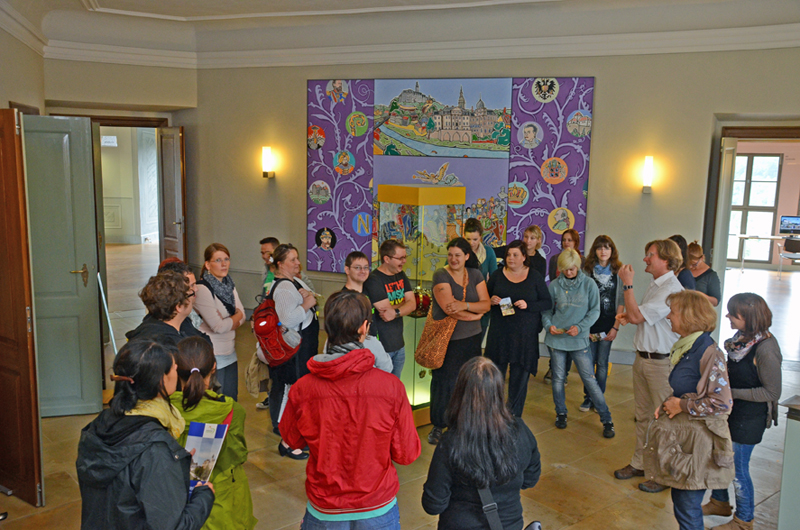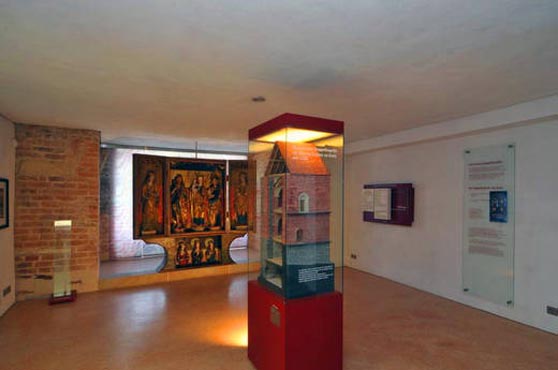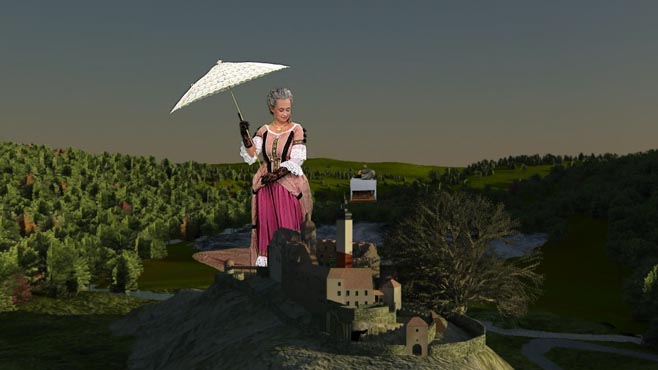The Upper Castle

Greiz was first mentioned in an official document dated 1209, which listed castellans of Greiz. It is assumed that the fortress in Greiz was built much earlier.
One piece of evidence of this is the double chapel that was rediscovered during ongoing restoration work and the dendrochronological dating indicating 1188.
This extraordinarily significant find sheds completely new light on the importance of the fortress in Greiz in the 12th century.
There are only two other double chapels in Thuringia. The medieval great hall, which was rededicated and remodelled to become the castle church in the 18th century, was connected to the Romanesque double chapel. The royal box with its precious stucco work was linked to the former castle church by a staircase.
Most of the rooms in the Upper Castle feature stucco work.
The Upper Castle reveals architectural features from the Romanesque to the Gothic, Renaissance, Baroque and even Rococo periods. Until 1809, the Upper Castle, apart from a short interval, was always the residence for lords, counts and the first Prince Heinrich XI of the Reuss Older Line, who was able to reunite the territory in 1768.
Heinrich XIII of the Reuss Older Line chose the Lower Castle as his place of residence. The Upper Castle was home to the royal state government and the royal consistory from then until 11 November 1918.
The permanent exhibition entitled “From the Land of the Vogtland Reeves to the Reuss Older Line Principality” has been located in one part of the Upper Castle since 2010. It deals with the history of the reeves, the lords, the imperial counts and Reuss imperial princes as well as the small-state royal culture associated with them.
The permanent exhibition in the Upper Castle is devoted to regionally important historical events, particularly related to the small-state royal culture.
The permanent exhibition

The Upper Castle Museum offers a multi-media history experience for people of all ages. Surf through 800 years of computer-animated architectural history on a skateboard and collect points in the process! Wear a knight’s and miner’s helmet yourself!
Sit next to nobles in the sound chair and learn about table manners back then!
You can do all this in the Upper Castle Museum in the former royal capital of Greiz.
You can feel like the lords themselves and discover first hand more about the golden age and major disasters for the Reuss princes in a 3D film. Go on an interactive journey through time from 1209 until well into the 18th century in a speaking elevator.
The castle lords will personally tell you about the events in their day and the life of the reeves, counts and Reuss Older Line princes. You just need to touch them.
Discovering things for yourself is the top priority!
The Double chapel

The Romanesque double chapel dating back to the 12th century, which was rediscovered during restoration work, is one of the outstanding features of the Upper Castle Museum. The Romanesque double chapel in Greiz provides architectural evidence for the outstanding importance of the fortress in Greiz at the end of the 12th century. These kinds of sacred buildings are extremely rare.
What is a double chapel?
A double chapel is generally described as a two-storey structure with chapel rooms located above each other. It was mainly a status symbol.
Double chapels have only been found at fortresses of Thuringian landgraves (at Landsberg, Freyburg now in Saxony-Anhalt; at Grosslohra, Eisenach now in Thuringia) or at imperial centres (Nuremberg, Cheb).
The upper chapel room (capella privata) had a groin vault. A two-storey apse bay window also protruded from the eastern outward wall.
The chancel with niches for the host opposite and the base of the vaults for the triumphal and apse arch can be seen from the lower chapel room.
The so-called royal box was installed in the lower and upper chapel rooms at a later date so that the ceiling opening between both chapels is no longer visible.
One part of the original construction of the upper chapel room (on the 1st floor) has survived. It is a simple stepped portal with a configured three-quarter pillar and tympanum with a half-figure relief and Romanesque stucco (2nd floor) as a fragment of an image of Christ in Glory.
The “The Glory Days” 3D film

An experience for the whole family
You can enjoy a 3D film in the vault of the Romanesque double chapel. It is called “The Glory Days of the Reusses” and transports you to the third dimension of Greiz history with a stereoscopic projection.
This film has been specially produced for the museums in the castle town and royal capital of Greiz. It completes the special museum experience with other surprises.

